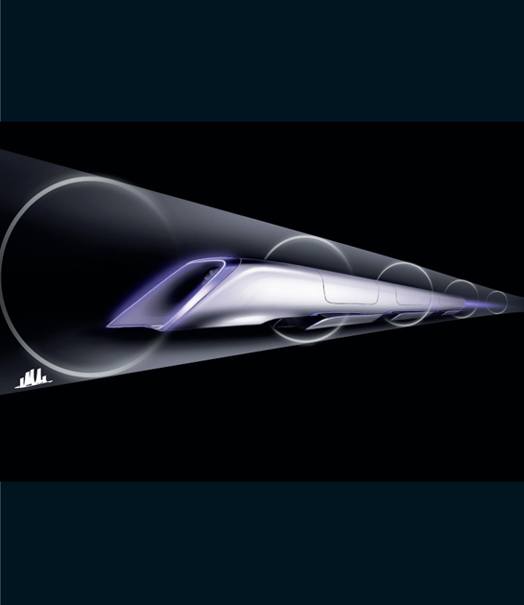c. 2020
Vactrains
There seems to be a speed limit on human transportation. Cars get up to about 200 mph (320 kph) and they seem to stop there. Trains too. Jet airplanes do better, but they cap out around 500 mph (800 kph). Why do engineers hit these barriers?
The answer is air and the drag it causes. To get a Bugatti Veyron to go 200 mph, it takes about 1,000 hp (750,000 watts) and 2 gallons of fuel per minute. Almost all of that power goes into pushing air out of the way. The same is true for high-speed trains. Jet airplanes can do better because they cruise at 30,000 feet (9,000 meters) where air density is one-quarter of its value at sea level.
What is the solution if people want to go faster? Engineers need to eliminate the air. That is where the idea of vactrains comes from—and research currently being conducted at China’s Southwest Jiaotong University suggest that they could become a reality as soon as 2020. A vactrain is a magnetically levitated vehicle running inside a tube that has had much of the air removed. In theory a vactrain can run at 3,000+ mph (4,800 kph) if the vacuum is good enough. At that speed, a trip across the United States takes an hour. A trip from New York to Beijing takes four hours. Vactrains would make long distance travel much easier and also, potentially, far less expensive.
There are several engineering hurdles that arise, however. One is the turning radius at 3,000 mph. A vehicle going that fast needs very gentle curves in order to avoid excessive g-forces for the passengers. The turning radius is measured in hundreds of miles. That same rule applies for elevation changes. The track needs to be very smooth and level.
Another potential problem is the ocean. How can track cross large bodies of water? One innovative solution is to let the tube float several hundred feet below the surface, with anchor cables tying it to the bottom.
The vactrain is one of those ideas that could revolutionize our lives. And we already possess all of the technology to do it. All that is needed is the will and the investment.
SEE ALSO Magnetically Levitated Trains (1937), Bugatti Veyron (2005).

Released by Tesla Motors, this is a conceptual design rendering of the Hyperloop passenger transport capsule.